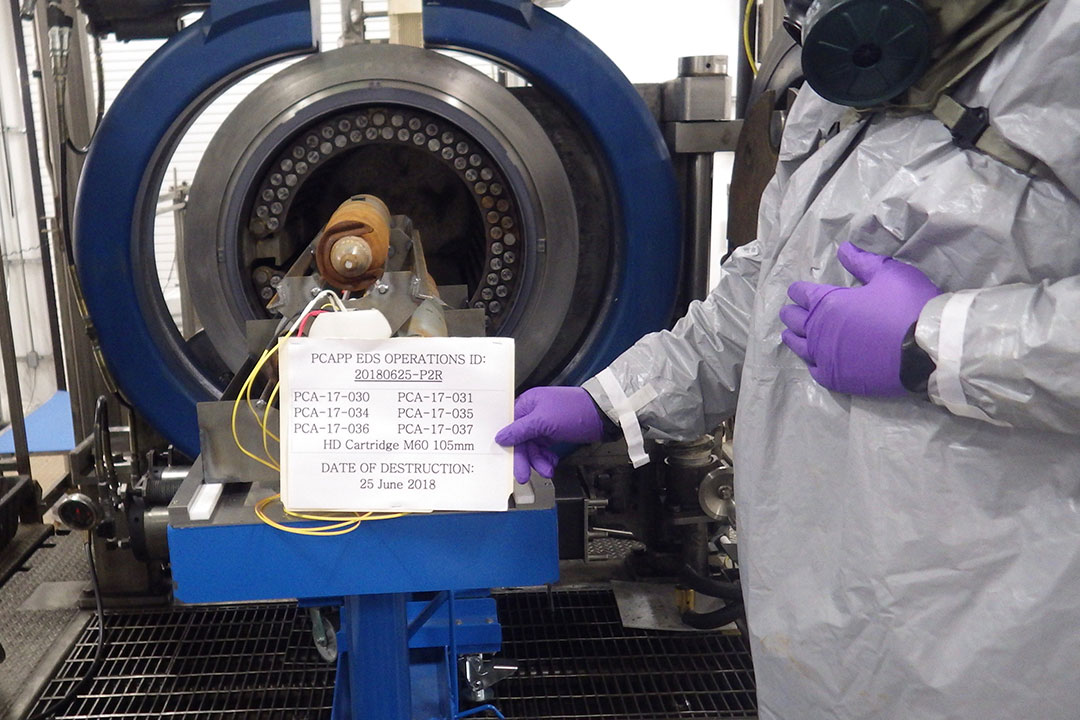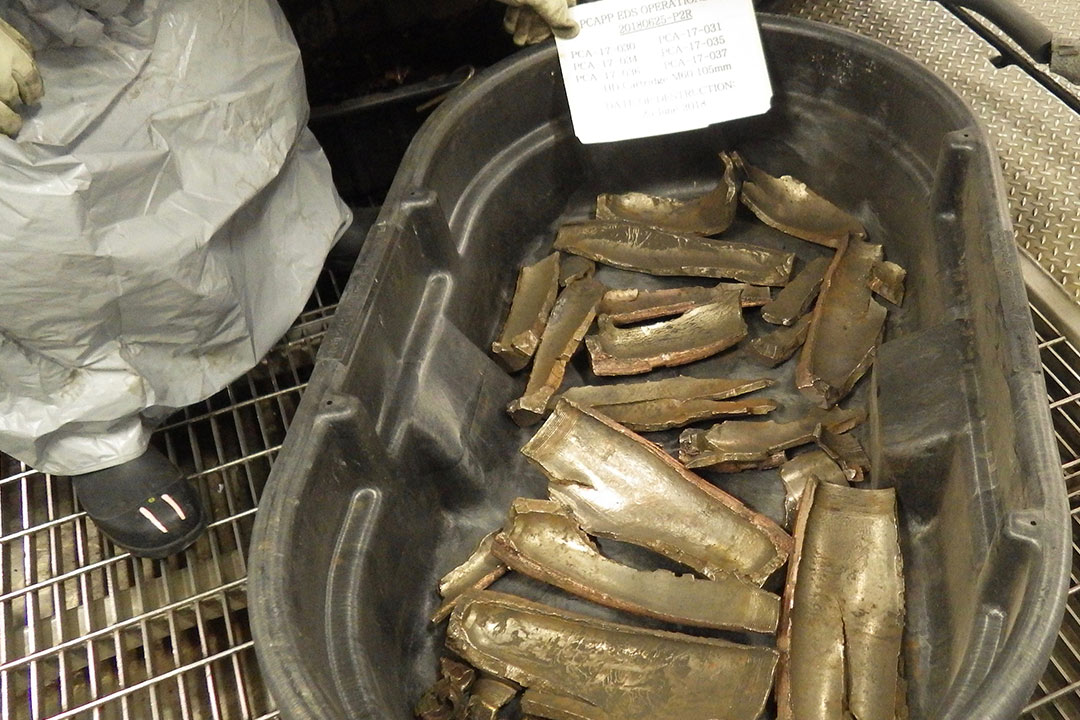// NEWS RELEASE
RDECOM C&B personnel continue chemical agent destruction operations in Pueblo
CCDC Chemical Biological Center Public Affairs | August 7th, 2018
RDECOM C&B personnel continue chemical agent destruction operations in Pueblo
DEVCOM CBC Public AffairsAugust 7th, 2018

An RDECOM C&B Explosive Destruction System technician holds a sign in front of six 105mm problematic projectiles just before entering them into the vessel for a detonation, signaling the start of the second campaign for this destruction technology. (Photo courtesy of PEO ACWA.)
U.S. Army Research, Development and Engineering Command Chemical & Biological (RDECOM C&B) Center personnel began a second round of chemical agent destruction recently at the Pueblo Chemical Depot (PCD).
In support of the Program Executive Office, Assembled Chemical Weapons Alternatives’ (PEO ACWA) mission to safely destroy the chemical weapons stockpile, experts from the Chemical Biological Application and Risk Reduction (CBARR) Business Unit, a division of RDECOM C&B, operate the Explosive Destruction System (EDS) and provide on-site laboratory and air monitoring support. The team also conducts routine and preventative maintenance on the EDS and all support equipment. Their partner in this work is the U.S. Army Chemical Materials Activity’s Recovered Chemical Materiel Directorate (CMA-RCMD), who developed the EDS destruction technology.
The team previously operated the EDS at PCD from March 2015 to February 2016, destroying 560 items, including projectiles, mortar rounds and Department of Transportation bottles that contained mustard agent.
While operations began on June 25, planning for the operation started months before. Using prior experience and lessons learned, the team worked with PEO ACWA and
U.S. Army Chemical Materials Activity (CMA) to update standard operating procedures, safety plans, training requirements and project documentation. Additionally, team members transported equipment and supplies to the site, conducted on-site testing and pre-operational surveys, and participated in inter-agency exercises for emergency response.
“Our team of 19 personnel supporting this operation are trained, knowledgeable, experienced and prepared to safely execute the chemical weapons destruction using the EDS,” said Dennis Bolt, project manager.
The EDS, developed and owned by the CMA-RCMD, provides on-site treatment of chemical warfare materiel in a safe, environmentally sound manner through the use of precise explosive charges and reagent application all within a robust stainless-steel vessel ranging from 3.5-inch-thick walls up to a 9-inch-thick door.

As with the start-up or restarting of any project, there are challenges. “The biggest challenge we faced was integrating EDS operations back into PCD’s daily operations,” Bolt said. “It’s been a while since the EDS operated at PCD and there were learning curves associated with restarting the project/operation. After several exercises, practices and table top reviews, all parties were comfortable with the operation and we started on schedule.”
As of July 17, 50 percent of the munitions scheduled for destruction in the EDS have been eliminated. This campaign is slated to take about four months.
With more than 250 U.S. tons of mustard agent safely destroyed by systems in support of the PCD and Pueblo Chemical Agent Pilot Plant (PCAPP) mission to date, the team at PCAPP is continuing the mission of destroying America’s chemical weapons stockpile.
The U.S. Army Combat Capabilities Development Command (DEVCOM) leads in the discovery, development and delivery of technology-based capabilities to enable Soldiers to win our nation’s wars and come home safely. DEVCOM is a major subordinate command of the U.S. Army Futures Command. The DEVCOM Chemical Biological Center is the Army’s principal research and development center for chemical and biological defense technology, engineering and field operations. The DEVCOM Chemical Biological Center is headquartered at Aberdeen Proving Ground, Maryland.
